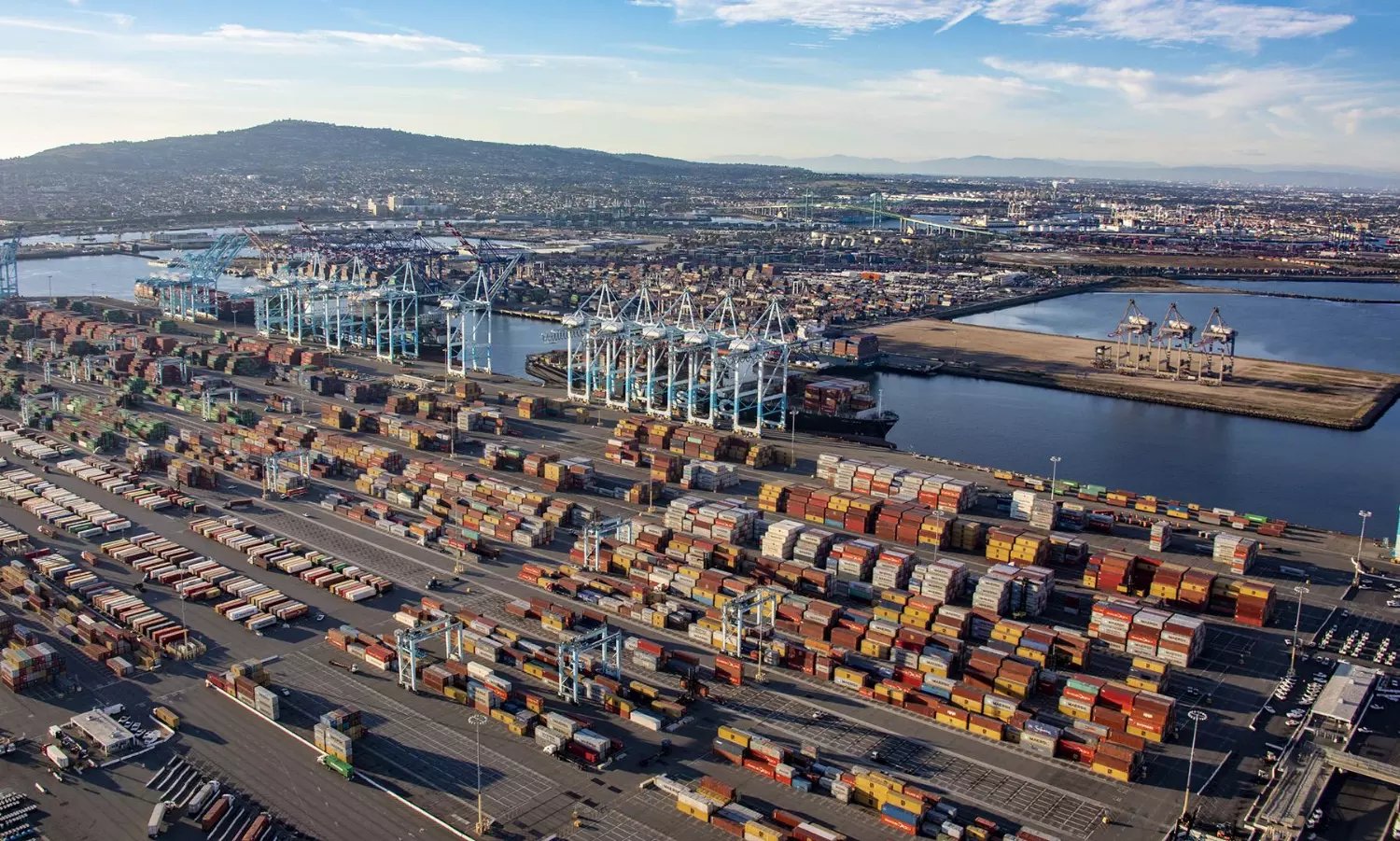Pressure to continue across U.S. ports, shipping rates to stay high
Vessels scheduled to depart Asia – and subsequently arrive on the North American West Coast – will increase sharply

The number of deployed vessels will be an element feeding into the congestion issues, according to an analysis by Sea-Intelligence based on data from the pre-pandemic period (2017-19) and the current numbers from its Trade Capacity Outlook database.
In very simplified terms, it is less efficient to handle two 5,000 TEU vessels than it is to handle one 10,000 TEU vessel, once the time to get to and from berth is factored in, the report said.
"During the early pandemic period, there was an unusually large decline in the number of deployed vessels as blank sailings rose rapidly," says Alan Murphy, CEO, Sea-Intelligence. "But after this early phase, the number of deployed vessels first increased back to normal, and then reached a high point towards the end of peak season 2021. There was a temporary drop for Chinese New Year 2022, followed by a very sharp upwards correction as we get into the current outlook for March/April 2022."
Figure 1 shows the change in the number of vessels since the start of 2020, relative to the pre-pandemic period (2017-2019). With the recent data, we can see a seasonal dip due to Chinese New Year 2022 but it is the increase in March/April 2022 that should be particularly noticed.
"The number of vessels scheduled to depart Asia – and subsequently arrive on the North American West Coast – will increase sharply and surpass a 40 percent increase compared to the pre-pandemic normality. This in itself will add further pressure on the port infrastructure," Murphy added.
What is more alarming is that there is a 60 percent increase in the number of vessels on the Asia-North America East Coast trade lane in the coming months as carriers try to circumnavigate port congestion on the West Coast. This will severely increase pressure on the port infrastructure on the East Coast.
Congestion continues at LA/LB ports but down from peak
As many as 75 container ships were backed up across the West Coast ports of Los Angeles/Long Beach on February 15, 2022 - a drop of 34 ships than the record of 109 hit on January 9, 2022, according to data from Captain J. Kipling (Kip) Louttit, Executive Director, Marine Exchange of Southern California & Vessel Traffic Service Los Angeles and Long Beach San Pedro, CA.
While only three container ships are anchored/loitering off the ports of LA/LB, the remaining 72 ships in the backup are following the new queuing system for labour, administered by Pacific Maritime Management Services, Capt Kip added.
Rates to be high in 2022: Xeneta
"There is no reason to think box rates will decrease drastically on a macro basis," says Patrik Berglund, CEO, Xeneta.
A Russian invasion or attack on Ukraine will spike oil/LNG prices, which will result in bunker surcharges. Other regional/EU disruptions will occur if Russian access to SWIFT is cut off, causing their exports to collapse, he added.
"Assuming the Asia-US and Asia-EU trade continues unharmed, any effect on rates should be neutral to upward."
On a micro basis, the box carrier acquisition spree to acquire more vessels by either purchasing or long-term charter has measurably increased their operational costs. "Hence in today's strong market, the carriers will have increased motivation not to engage in a rate war if cargo volumes flag. For various reasons, box rates look to remain high, and 2022 looks to be yet another challenging year."


